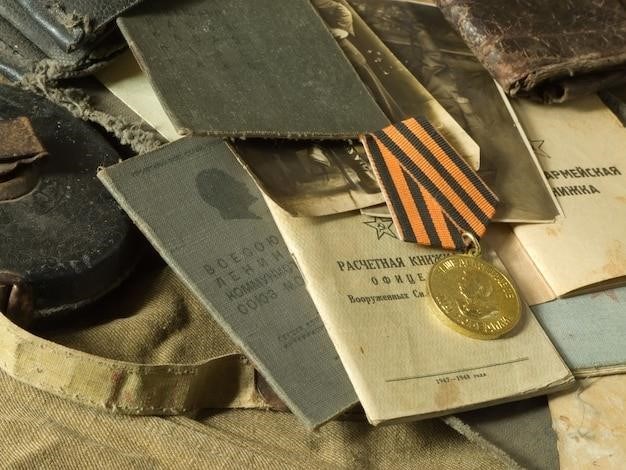World War I Study Guide
This study guide provides a comprehensive overview of World War I, covering its causes, major players, course of the war, key battles and events, impact of technology, Treaty of Versailles, aftermath, legacy, and resources for further study. It also includes important terms and concepts, study tips, and strategies to help you succeed in your studies.
The Causes of World War I
World War I, a global conflict that engulfed Europe and beyond from 1914 to 1918, was a culmination of complex and interconnected factors. These factors, often referred to as the MAIN causes, are⁚
- Militarism⁚ The intense build-up of military forces and weapons by European nations, fueled by a belief in the strength of military power and a sense of national pride. This arms race created an atmosphere of tension and suspicion, making war more likely.
- Alliances⁚ A network of complex treaties and agreements between European powers, forming two main blocs⁚ the Triple Alliance (Germany, Austria-Hungary, and Italy) and the Triple Entente (France, Russia, and Great Britain). These alliances, designed to provide mutual support in case of attack, inadvertently led to a domino effect, dragging nations into the war even if they had no direct interest in the initial conflict.
- Imperialism⁚ The competition between European powers for colonies and resources in Africa and Asia, creating tensions and rivalries. Imperialist ambitions fueled nationalism and increased the desire for military strength, further contributing to the build-up of tensions.
- Nationalism⁚ A strong sense of national identity and pride, often leading to a desire for independence or dominance. Nationalist sentiments in the Balkans, particularly among Serbs and Austrians, played a crucial role in the outbreak of the war. The assassination of Archduke Franz Ferdinand, heir to the Austro-Hungarian throne, by a Serbian nationalist in Sarajevo, ignited the powder keg.
These four factors, intertwined and reinforcing each other, created a volatile situation in Europe, making a major war almost inevitable. The assassination of Archduke Franz Ferdinand acted as the catalyst, setting off a chain reaction of diplomatic maneuvers and military mobilizations that led to the outbreak of the Great War.
The Major Players
World War I involved a complex web of alliances, drawing in nations from across the globe. The two main warring factions were the Central Powers and the Allied Powers. The Central Powers consisted of⁚
- Germany⁚ A powerful and rapidly industrializing nation, driven by a sense of nationalism and desire for greater influence. Germany’s military strength and ambition played a significant role in escalating tensions and ultimately triggering the war.
- Austria-Hungary⁚ A vast and multi-ethnic empire, facing internal pressures and struggling to maintain control over its diverse population. The assassination of Archduke Franz Ferdinand, heir to the Austro-Hungarian throne, by a Serbian nationalist in Sarajevo, provided the immediate trigger for the war.
- Ottoman Empire⁚ A declining empire, controlling vast territories in the Middle East, North Africa, and the Balkans. The Ottoman Empire joined the Central Powers in 1914, hoping to regain lost territories and influence.
- Bulgaria⁚ A Balkan nation, allied with the Central Powers, seeking to expand its territory and influence in the region.
Opposing the Central Powers were the Allied Powers, which included⁚
- France⁚ Seeking to reclaim Alsace-Lorraine, territories lost to Germany in the Franco-Prussian War of 1870-71, France joined the war with a strong sense of nationalistic fervor.
- Russia⁚ A vast and powerful empire, allied with France, seeking to expand its influence in the Balkans and protect Slavic populations.
- Great Britain⁚ A global superpower, initially hesitant to enter the war, but ultimately joining the Allied Powers to protect its interests and maintain its balance of power in Europe.
- Italy⁚ Initially allied with the Central Powers, Italy switched sides in 1915, drawn by the promise of territorial gains in Austria-Hungary.
- United States⁚ Initially neutral, the United States joined the Allied Powers in 1917, driven by Germany’s unrestricted submarine warfare, which targeted American ships, and by the Zimmermann Telegram, which revealed a German plot to entice Mexico into attacking the United States.
This complex network of alliances, fueled by a myriad of national ambitions, ideologies, and interests, transformed a regional conflict into a global war.
The Course of the War
World War I, a conflict of unprecedented scale and brutality, unfolded in a series of distinct phases, each marked by its own defining characteristics and strategic shifts. The war began in 1914 with a swift and decisive German offensive, known as the Schlieffen Plan, aimed at quickly defeating France before turning its attention to Russia; However, the plan faltered, leading to a stalemate on the Western Front, characterized by trench warfare and devastating artillery bombardments.

On the Eastern Front, Russia’s initial advance into Germany was halted, and the war turned into a protracted struggle of attrition, marked by heavy casualties and limited territorial gains. In 1915, the war expanded beyond Europe, with the Ottoman Empire joining the Central Powers and the Allied Powers engaging in campaigns in the Middle East and Africa. The war also saw the rise of new technologies, such as tanks, airplanes, and poison gas, which dramatically altered the nature of warfare and resulted in unprecedented levels of destruction.
The year 1917 witnessed a turning point in the war. The Russian Revolution, which overthrew the Tsarist regime, led to Russia’s withdrawal from the war, freeing up German troops for deployment on the Western Front. However, the United States’ entry into the war in 1917, spurred by Germany’s unrestricted submarine warfare and the Zimmermann Telegram, tipped the balance of power in favor of the Allies. By 1918, the Central Powers were facing a desperate situation, facing exhaustion, dwindling resources, and mounting pressure from the Allied forces. The war finally ended on November 11, 1918, with the signing of the Armistice, marking the end of one of the deadliest conflicts in human history.
Key Battles and Events
World War I was a global conflict that encompassed a vast array of battles and events, each contributing to the course of the war and shaping its ultimate outcome. The Battle of the Marne, fought in September 1914, marked a turning point in the war, halting the German advance towards Paris and forcing the war into a stalemate on the Western Front. The Battle of Verdun, a brutal and protracted battle fought in 1916, saw both sides suffer immense casualties, with the French ultimately holding their ground against the German offensive. The Battle of the Somme, also fought in 1916, saw the British and French launch a massive offensive against German lines, resulting in heavy casualties on both sides and limited territorial gains. The war’s devastating nature was further demonstrated by the use of poison gas, first employed by the Germans in 1915, which resulted in horrific casualties and lasting health consequences.
The war also witnessed significant events beyond the battlefields. The sinking of the Lusitania, a British passenger liner torpedoed by a German submarine in 1915, outraged public opinion in the United States and contributed to the country’s eventual entry into the war. The Russian Revolution, which began in 1917, led to Russia’s withdrawal from the war, significantly altering the balance of power. The Treaty of Brest-Litovsk, signed by Russia and Germany in 1918, formally ended Russia’s participation in the war, but at a heavy cost, with Russia ceding significant territory to Germany. The war’s end, marked by the Armistice signed on November 11, 1918, brought an end to four years of devastating conflict, leaving a lasting impact on the world.
The Impact of Technology
World War I witnessed a profound impact of technological advancements on warfare, ushering in a new era of mechanized and industrial warfare. The development of the tank, first deployed by the British in 1916, revolutionized land warfare, providing a means to overcome the stalemate of trench warfare. The use of aircraft, initially employed for reconnaissance, evolved into aerial combat, with dogfights becoming a defining aspect of the war. The introduction of machine guns, capable of firing hundreds of rounds per minute, significantly increased the lethality of infantry combat, leading to devastating casualties. The war also saw the horrific introduction of chemical weapons, with poison gas first used by the Germans in 1915, causing widespread casualties and long-term health consequences.
The widespread use of these new technologies drastically altered the nature of warfare, resulting in unprecedented levels of destruction and casualties. The trenches, designed to provide protection from enemy fire, became symbols of the war’s brutal and drawn-out nature. The impact of technology on warfare was not limited to the battlefield; advancements in communication, such as the telegraph and wireless radio, enabled faster communication and coordination between military units. The war also saw advancements in medical technology, with the development of new techniques for treating battlefield injuries and the widespread use of antibiotics. The impact of technology on World War I was profound, shaping the course of the war and leaving a lasting legacy on the development of military strategy and technology.
The Treaty of Versailles
The Treaty of Versailles, signed in 1919, marked the official end of World War I. It imposed harsh penalties on Germany, aiming to weaken its military and economic power and prevent future aggression. Germany was forced to accept responsibility for the war, known as the “war guilt clause,” and was required to pay substantial reparations to the Allied powers. The treaty also significantly reduced the size of Germany’s army, restricted its navy, and prohibited the development of an air force. Additionally, Germany was forced to cede territory to neighboring countries, including Alsace-Lorraine to France and parts of its colonies to other Allied powers. The treaty also established the League of Nations, an international organization aimed at preventing future wars through diplomacy and collective security.
The Treaty of Versailles had a profound and lasting impact on the international order, shaping the geopolitical landscape for decades to come. While it aimed to prevent future conflict, the treaty’s harsh terms contributed to resentment and instability in Germany, ultimately playing a role in the rise of Nazi Germany and the outbreak of World War II. The treaty also highlighted the limitations of a victorious peace imposed upon a defeated nation, emphasizing the need for a more nuanced and equitable approach to international relations.
The Aftermath of the War
The aftermath of World War I was a period of profound upheaval and transformation, leaving a lasting impact on the global landscape. The war had decimated Europe, both physically and economically, with millions of casualties and widespread destruction. The Treaty of Versailles, while intended to prevent future conflict, imposed harsh penalties on Germany, leading to resentment and instability that ultimately contributed to the rise of Nazi Germany and World War II. The war also led to the collapse of empires, including the Austro-Hungarian, Ottoman, and Russian empires, resulting in the redrawing of political boundaries and the emergence of new nation-states.
The war’s impact extended beyond Europe, as it sparked revolutions and uprisings in other parts of the world. The rise of the United States as a global power was another significant consequence, as the country emerged from the war relatively unscathed and emerged as a key player in international affairs. The war also ushered in a new era of social and political change, with women’s suffrage gaining momentum and the rise of new ideologies, including communism and fascism. The war’s legacy continues to shape the world today, reminding us of the profound consequences of conflict and the importance of international cooperation and diplomacy.
The Legacy of World War I
World War I left an enduring legacy on the world, shaping the course of the 20th century and beyond. The war’s devastating consequences, including millions of casualties and widespread destruction, led to a profound sense of disillusionment and a questioning of the values and beliefs that had led to the conflict. The war also gave rise to new ideologies, such as communism and fascism, which sought to address the perceived failures of the old order. The Treaty of Versailles, imposed on Germany, sowed the seeds of resentment and instability that ultimately contributed to the outbreak of World War II.
The war also had a profound impact on the development of international relations. The League of Nations, established in the wake of the war, was an attempt to prevent future conflict through collective security, but ultimately proved ineffective. The war also led to the rise of the United States as a global power, as the country emerged from the conflict relatively unscathed and emerged as a key player in international affairs. The war’s legacy continues to shape the world today, reminding us of the importance of international cooperation and diplomacy, the dangers of unchecked nationalism and militarism, and the need for a more just and equitable global order.
Resources for Further Study
To delve deeper into the complexities of World War I, explore these invaluable resources⁚

- The International Encyclopedia of the First World War (WW1)⁚ This comprehensive, peer-reviewed online encyclopedia offers a wealth of information on all aspects of the war, from its origins to its impact on global society.
- SparkNotes World War I (1914-1919) Study Guide⁚ This guide provides a concise overview of the war, including summaries of key events, battles, and figures.
- Epic History TV’s “World War I” Series⁚ This comprehensive YouTube series provides a detailed and engaging account of the war, from its causes to its aftermath.
- “Murphy the Hero Donkey⁚ A True WW1 Story” by George Isabel⁚ This heartwarming story highlights the role of animals in the war.
- “SSCP (ISC)2 Systems Security Certified Practitioner Official Study Guide” by Murphy⁚ This guide explores the impact of technology on warfare during World War I.
These resources offer a variety of perspectives and insights, enriching your understanding of this pivotal historical event.


